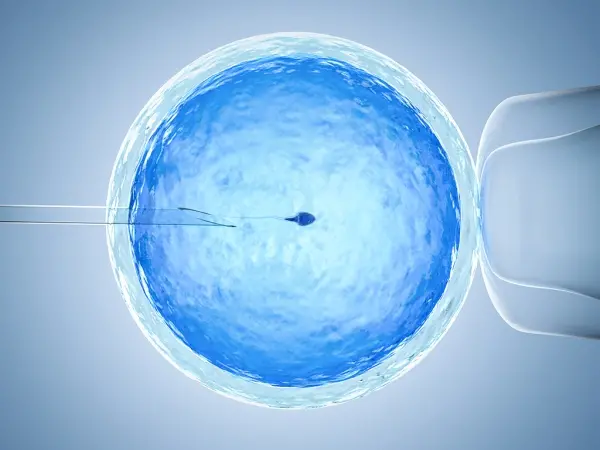Your Schedule Revolves Around the Treatment
IVF requires multiple visits to the clinic, sometimes every day. And despite your busy schedule, these visits can’t be postponed. You will be put on fertility medications for about the first 12 days, followed by egg retrieval and fertilization. After around five days, the embryo will be transferred to your uterus. Since these processes have little room for delay, you will have to keep everything else on the back burner.
The Younger, The Better
Even though human ovaries have nearly 1 million eggs at birth, only about 300 of them mature naturally in a lifetime. The number of healthy eggs also decreases with a woman’s age. A 25-year-old woman has nearly 75% chromosomally normal eggs, but the number goes down to 10-20% by the time she is 40. So, starting a female infertility treatment while you are younger gives you a better chance at succeeding and having a healthy child.
The Longest 2WW
The “2WW” or “2-week wait” is the recommended wait time before taking a pregnancy test post embryo transfer. This is when you actually get to know if the IVF cycle was a success. For couples undergoing fertility treatments, the 14-day wait period is usually full of anxiety. Despite the recommendation, some couples take a pregnancy test within 14 days of embryo transfer. This can give a false negative, or rarely a false positive, both of which are upsetting.
Your Habits Affect the Egg Quality
Your food and lifestyle habits affect your egg health. Healthy food, exercise, and enough sleep help you maintain good egg quality. Your fertility specialist might advise you to avoid caffeine, alcohol, tobacco, and other addictive substances. These lifestyle changes are beneficial for women with PCOS, as maintaining a healthy weight can increase their chances of success with IVF treatments. While these don’t magically change your egg health, they are known to have a considerable impact.
Sperm Quality Also Matters
Just like the egg, the quality of the sperm also matters. The sperm count, mobility, and form, all affect sperm quality. Good quality sperm makes the fertilization process much easier. But even with poor sperm quality, the egg can still be fertilized through advanced techniques and male infertility treatment.
Your Hormones Are Messed Up
IVF treatments involve a lot of hormones such as estrogen and progesterone, especially during the first two weeks of the treatment. The hormones are meant to stimulate egg maturation, but they will do more than just that. Apart from physical symptoms like nausea and hot flashes, women also experience mood swings. Certain women also report severe side effects, although such instances are rare. These include fluid build-ups, cysts, pelvic infections, and allergies. Dealing with infertility and its treatment is stressful enough and combining it with hormonal injections can make you an emotional wreck. You must talk with your family members and ask for support. Your IVF clinic will also generally be able to provide you with support. At ART Fertility clinics we have qualified professionals available to support all our patients.
You May Need Multiple Treatment Cycles
Not every IVF cycle results in pregnancy. This doesn’t mean your next IVF cycle won’t be successful. The treatment involves a lot of steps that require patience and persistence. Many couples get dejected after a failed first attempt and second-guess their choices. But on average, only 35% of IVF treatments are successful in the first attempt When opting for an IVF technique, it is best to be prepared for at least 2-3 cycles of treatment.
But You Don’t Have to Start Over Every Time
Even though you might need multiple cycles, you can skip the initial steps by freezing your embryos from a previous cycle. Both fresh and frozen embryos have almost equal chances of IVF success, and there are no known benefits of fresh embryo transfers over frozen transfers. Most clinics retrieve and fertilize multiple eggs and preserve them for the next cycle. Moreover, frozen embryo transfer gives you more time flexibility as you don’t rely on hormonal medications.
Additional Techniques are Available
IVF is a revolutionary technology in itself, but additional procedures can increase the chance of IVF being a success. One such technique is Laser Assisted Hatching, which creates a hole in the protective covering of the embryo, allowing it to implant in the mother’s uterus easily. Another technique is the Preimplantation Genetic Testing, which is done to rule out any genetic issues in the embryo. A fertility specialist carries out this test before implantation, so only healthy embryos can be transferred. PGT detects several genetic disorders such as Down Syndrome and Turner Syndrome. Whether fresh or frozen, all embryos can go through this test.
Multiple Pregnancies Are More Common With IVF
Sometimes, doctors transfer more than one embryo into your uterus to increase your chance of success. But if two or more embryos survive, you will likely have multiple pregnancies. This does not mean you will have quadruplets or quintuplets, as such instances are pretty rare and often not a result of IVF treatments. However, twins and triplets are more possible. While having multiple pregnancies is great for many couples, it can lead to pregnancy complications such as premature birth and low birth weight. It is essential to constantly monitor the mother’s health to rule out any complications.
Wrapping Up
Opting for IVF is a big step for both you and your partner. And with such an important decision, it is essential to choose the right fertility clinic. At ART Fertility Clinics, we take utmost care to ensure that our patient gets the best treatment that they need. We have consistently achieved a 70% pregnancy rate over several years, with the help of our experienced doctors and state-of-art technology. By choosing ART, you are choosing a safe space for your fertility treatments.



